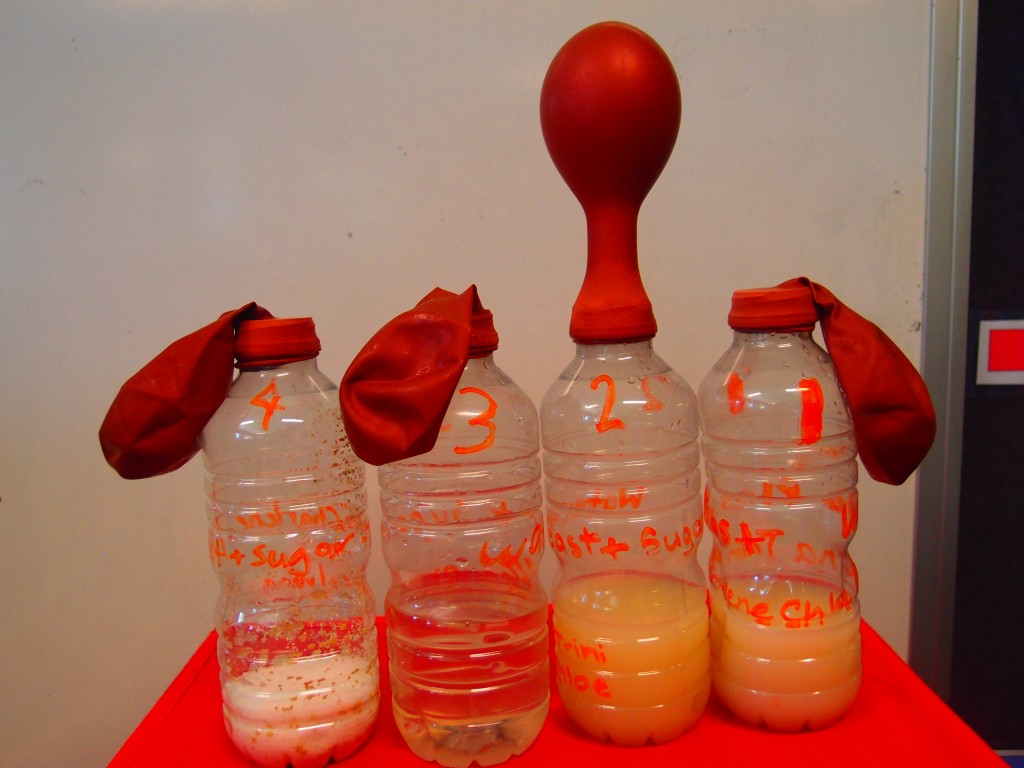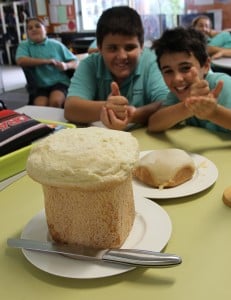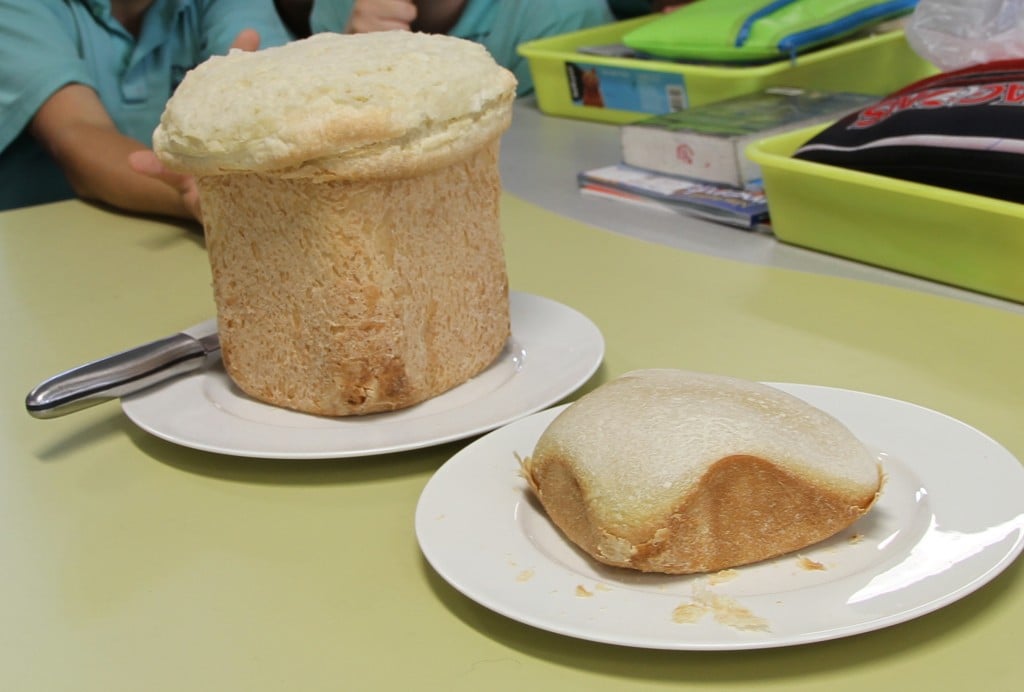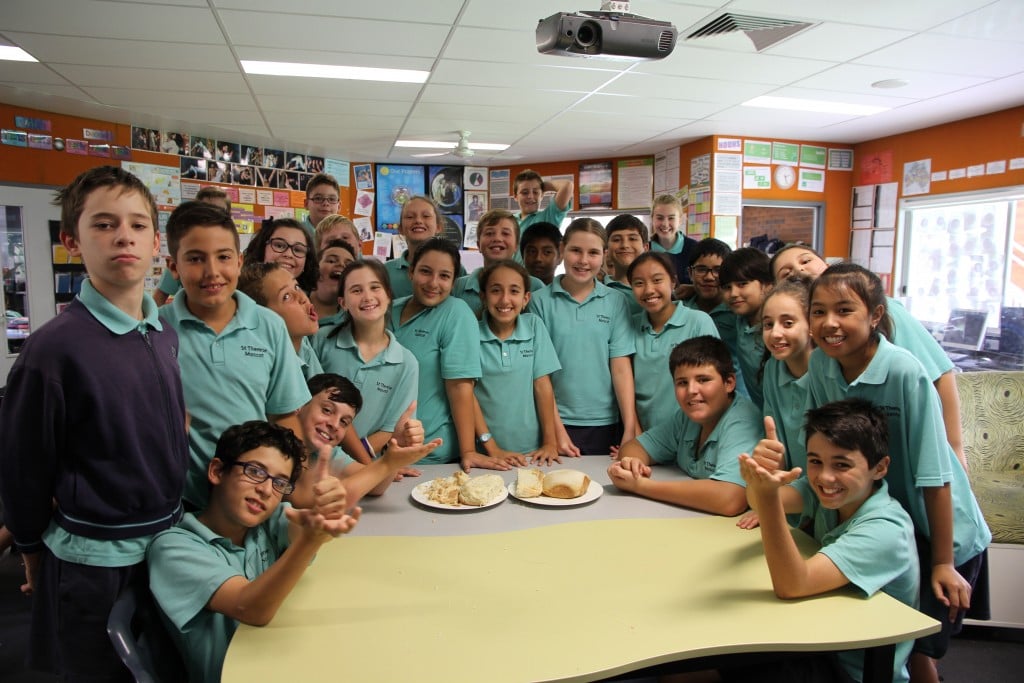In Science, we have been investigating the micro-organism, yeast. Yeast is a micro-organism because it is a single living cell and it is impossible to see with the naked eye. We know yeast is alive because given the right conditions (temperature and food), yeast will grow and multiply.
Through our first experiment, we discovered that yeast produces a carbon dioxide gas and alcohol when mixed with water and sugar. We came to this conclusion because we saw bubbles forming at the top of the yeast solution which was the gas. This gas then inflated the balloon attached to the plastic bottle containing the yeast solution. We could smell the alcohol when we held the neck of the balloon attached to the bottle to our nose. When it was time to dismantle our experiment, we smelt the alcohol again when Mrs Quealy removed the balloon from the bottle. It gave off a disgusting odour, it was YUCK!

Bottle 2 balloon inflated
Can you see why the other balloons did not inflate? Why don’t you let us know your ideas and post a comment! Maybe knowing what the ingredients of each bottle would help further understand!
Bottle 1 = yeast and water
Bottle 2 = yeast, sugar and water
Bottle 3 = sugar and water
Bottle 4 = yeast and sugar.
In our second experiment, (finished products pictured below) we wanted to find out what the best temperature was for yeast to be active. We learnt that the best temperature for yeast to be active was 37 degrees – not too hot and not too cold, just right!
Science Experiment on PhotoPeach
Here we are feeling very pleased with ourselves having just finished our second Science experiment investigating micro-organisms.




